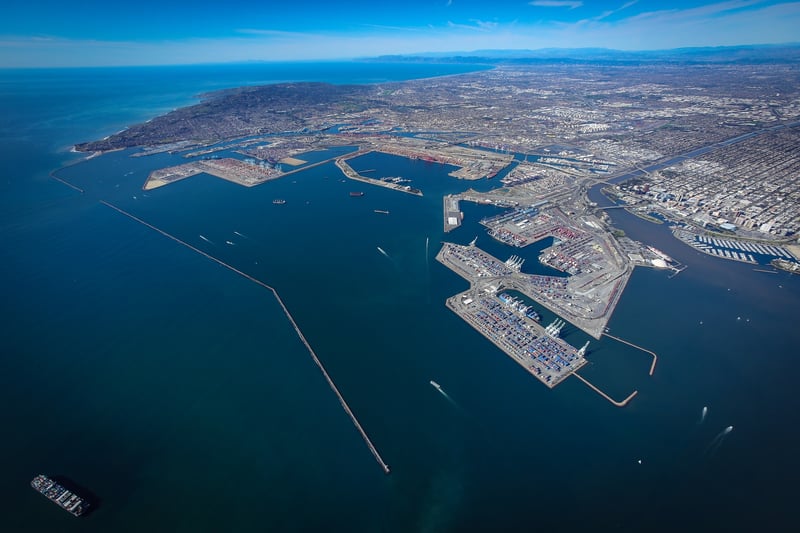
Cargo surges ahead of Lunar New Year
Cargo Surges Ahead of Lunar New Year
The Port of Long Beach hovered near record container cargo levels to begin the new year.
In January, dockworkers handled 657,286 twenty-foot equivalent units (TEUs), a 0.1 percent decrease compared to the Port’s all-time January record set in 2018, which turned out to be the Port’s busiest year. Imports totaled 323,838 TEUs, down 0.3 percent. Exports slid 2.7 percent to 117,288 TEUs while the number of empty containers shipped overseas rose 1.6 percent to 216,160 TEUs.
“It’s encouraging to see these healthy volumes to start the year,” said Port of Long Beach Executive Director Mario Cordero. “As long as the economy is performing well, we expect our container trade to mirror it. Regardless, the Port will continue to focus on delivering operational excellence, working with ocean carriers, terminals, truckers, labor, cargo owners and all of our many stakeholders.”
“While it will be a challenge to top last year, when we moved the most cargo in our 108-year history, we do anticipate modest growth in 2019,” said Long Beach Harbor Commission President Tracy Egoscue. “The Commission would like to wish our supply chain partners in Asia a happy Lunar New Year, and prosperous months ahead.”
The latest monthly cargo numbers can be found here.
More detailed cargo numbers are at www.polb.com/stats.
The Port of Long Beach is one of the world’s premier seaports, a gateway for trans-Pacific trade and a trailblazer in goods movement and environmental stewardship. With 175 shipping lines connecting Long Beach to 217 seaports, the Port handles $194 billion in trade annually, supporting hundreds of thousands of Southern California jobs.









